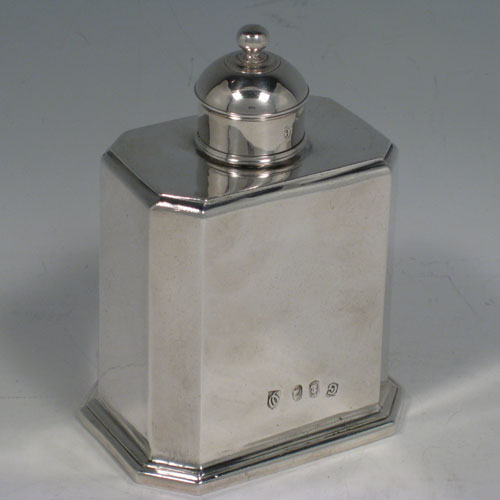ANTIQUE SILVER TEA CADDY BOXES
Antique Silver tea caddy boxes Description:
A closed container for dried tea leaves.
Antique Silver tea caddy boxes History:
Tea caddies made before 1700 are rare. The word caddy comes from the Malay word kati, a weight by which tea was sold. As tea drinking became more popular the caddies became bigger, and in the 1760s locks were added as the tea was still very expensive. Single caddies were used before the 1730s when only black tea was used. After this date green tea was introduced and caddies were often made in pairs or threes (for black and green tea, and/or sugar).
Antique Silver tea caddy boxes Design:
The early ones were quite plain and often rectangular or octagonal in shape. They often had a circular (domed) pull-off lid that was used as a measure. The mid-Georgian rococo period saw these basic shapes becoming more elaborate with heavy floral chasing. The last thirty years of the 18th century saw tea caddy shapes becoming plainer again, dominated by straight-sided cubes, cylinders, and oval shapes. At this period neoclassical decoration was in vogue and many caddies were engraved with floral swags and bright-cut bands. In the Victorian period tea became less expensive and therefore caddy sizes were made smaller without locks. The twentieth century saw caddies further decreasing in size, often with simple decoration and pull-off lids.
Antique Silver tea caddy boxes Collectors Note:
Their age, level of craftsmanship and aesthetic qualities determine their value. Early Queen Anne/Georgian examples are sort after and command the highest prices. Heavily chased examples have to be checked carefully for holes on the high points. But they must also be undamaged with good clear hallmarks, crisp detail, and well-fitting lids/hinges.










